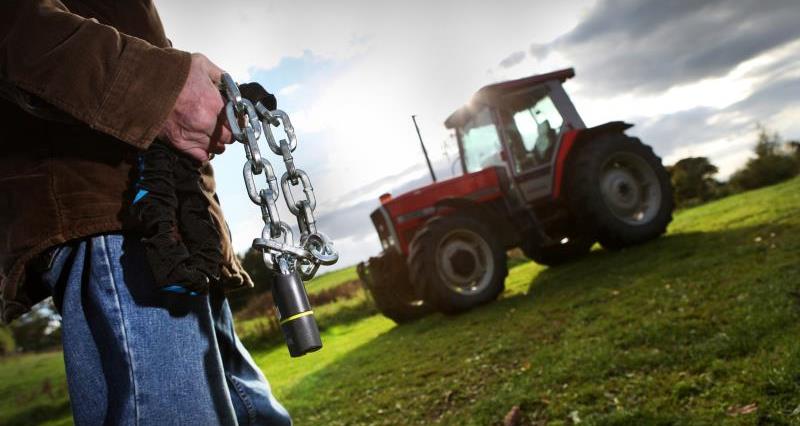Worrying surge in cost of rural crime
14th Aug 2017 / By Alistair Driver

The cost of rural theft has risen sharply in the first half of 2017, despite some businesses ‘turning their farmyards into fortresses’, according to new figures from NFU Mutual.
The figures show a 20% increase, prompting fears of a new wave of targeted crime in the countryside. The insurer’s Rural Crime Report showed a 4% decrease in rural crime costs nationally during 2016, with successful joint initiatives involving several police forces and improved on-farm security playing important roles.
But the £39.2 million claims total for 2016 will be outstripped by a substantial margin if the trend for January to June 2017 continues, it said.
Being ‘staked out’ is the biggest worry for country people, followed closely by longer police response times in rural areas, the report found. Criminals continue to target Land Rovers, quad bikes, tractors, tools and livestock.
“While the fall in rural theft in 2016 is welcome news, the sharp rise in the first half of 2017 is deeply worrying,” said Tim Price, NFU Mutual rural affairs specialist.
“Countryside criminals are becoming more brazen and farmers are now having to continually increase security and adopt new ways of protecting their equipment. In some parts of the country, farmers are having to turn their farmyards into fortresses to protect themselves from repeated thieves who are targeting quads, tractors and power tools.
"They are using tracking devices on tractors, video and infra-red surveillance in their farmyards and even DNA markers to protect sheep from rustlers.
“The threat of becoming a victim of rural crime, and regular reports of suspicious characters watching farms is causing high levels of anxiety amongst farmers who know their rural location makes them vulnerable to attacks.”
He said the Mutual had invested more than £1m to tackle the menace.
“The results of initiatives we support show clearly that when police, farmers and other rural organisations tackle rural crime in an organised way these schemes can be extremely effective,” he added.
Despite the overall drop in the costs of rural crime nationally in 2016, some areas saw increases, with the totals for the North East, South West and the East of England up 8.7%, 5.6% and 3.7% respectively.
Trends identified in the report inlcude:
Quads and ATVS - Quads and ATVs (All Terrain Vehicles) are disappearing from farms in large numbers – thanks to being easy to transport and lack of registration plates. The cost of Quad and ATV theft claims to NFU Mutual rose to £2m, an increase of 11% from 2015 to 2016. CESAR marking and tracking devices are the most effective security measures – once basic measures of keeping vehicles out of sight in a building with the machine secured to have been addressed.
Land Rover Defenders - Since the last of Land Rover’s iconic Defender rolled off the production line in January last year it has become an even bigger target for thieves. Costs for theft of Defender vehicle claims to NFU Mutual rose to £2.1 million in 2016, an increase of 17% since 2015. The region with the highest cost of Land Rover Defender thefts last year was the North East, followed by the South East, the Midlands and the South West.
Tractors - Thieves are increasingly cloning the identity of tractors to make detection more difficult. Eastern counties are being targeted most. Small, older tractors are being stolen for export to third world countries as well as expensive large models.
Livestock - The estimated cost of livestock theft fell from £2.9m in 2015 to £2.2m in 2016. All UK regions experienced a fall - apart from Wales where the cost rose by £100,000. Thefts of large numbers of lambs are raising concerns that stock is being stolen for slaughter and processing outside regulated abattoirs before illegally entering the food chain. Technology - including DNA testing and electronic chips in boluses now offer robust evidence to help bring rustlers to justice.